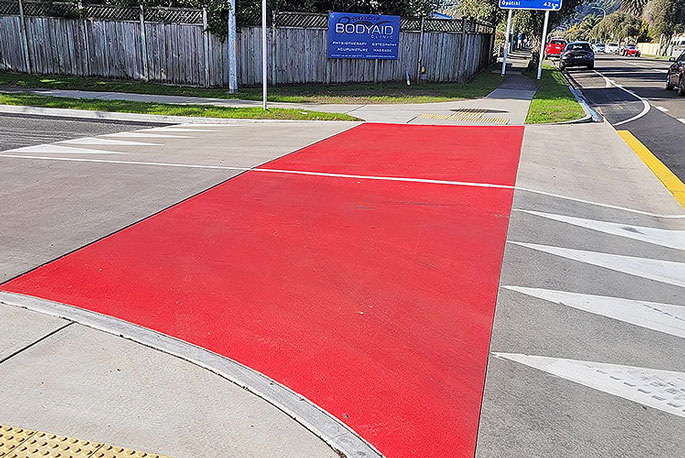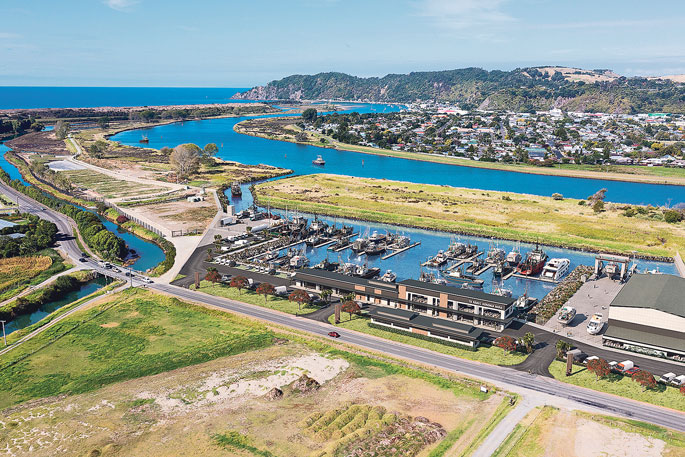Rates increases, spending on the boat harbour and council building upgrades have all had a negative impact on residents’ perceptions of Whakatāne District Council decision making according to survey results received last week.
SIL Research managing director Dr Virgil Troy and Natalia Rik presented a report on this year’s survey of 600 Whakatāne residents to the council’s finance and performance committee.
The survey is commissioned by the council annually to determine levels of satisfaction with its services, leadership, management, direction and much else, and to identify opportunities for improvement.
The survey was conducted at quarterly periods throughout the 2022-23 financial year (from July 1, 2023 to June 30, 2023) using a methodology comparable to that used over the previous three years.
Asked about the council’s policy and direction, 14 per cent of residents recalled a recent council action, decision or management experience they approved of, similar to 15 per cent last year.
A greater number, 45 per cent, recalled a recent experience they disapprove of, with the leading reasons being rates increases (18 per cent), the boat harbour, wharf and boat ramps (15 per cent) the council building upgrades (12 per cent) and spending decisions (10 per cent).
Other reasons for people’s discontent, cited by less than 10 per cent of respondents, were that council had too many people and not enough delivery, speed reductions, roundabout location and design, amount of, quality and timing of roadworks, speed bumps, water services, red crossings and road barriers and the tidal pool.
Among the council direction and policy people approved of were improvements to footpaths and bike paths and safety improvements, communications and consultations and road maintenance and repair.
 The safety improvements made to roads around the Pouwhare and Hikurangi streets and Eivers Road area received a big tick. Photo: Whakatāne District Council.
The safety improvements made to roads around the Pouwhare and Hikurangi streets and Eivers Road area received a big tick. Photo: Whakatāne District Council.
When asked about the council’s services, three out of five people surveyed found them satisfactory, or 61 percent, which was better than the 58 percent in a benchmark survey of 400 people nationwide.
Dr Troy told the council this was a “good, consistent result” with previous years, in a challenging environment that has included steady increases in the cost of living along with extreme weather events, both of which have been shown to have significant negative impacts on perceptions of council.
He said the local body elections were also something that could bring background issues into focus due to increased media coverage.
Specific to Whakatāne, Dr Troy said the spending on the council building was one of the issues people were concerned about.
“Even though that’s mentioned, it was actually part of your annual planning. It’s not like it was, ‘oh, I think we’ll do the building’. It was part of the consultation process that you’d been through as part of your long-term plan.
He complimented the council on the redevelopment of the council building, saying it was “just gorgeous”.
Councillors Andrew Iles, Gavin Dennis and Tu O`Brien all commented on Rangitaiki Plains recording lower levels of satisfaction across most areas than Whakatāne-Ōhope, Tāneatua-Waimana and Galatea-Murupara.
“Is there a reflection there that maybe we’re not getting what the other areas are getting?” Mr O’Brien speculated.
Out of 29 services provided by council that were surveyed, the five top-rated were the crematorium (88 percent satisfied), waste collection (88 percent) Te Koputu library and exhibition centre (87 percent) public halls (87 percent) and cemeteries (82 percent). The lowest rated services were dog control (38 percent) and noise control (43 percent).
Councillor Illes questioned why dog control got such a low rap.
“What was the question that was asked? From my experience, the work that the dog rangers do within our council is top class. Where is the problem?
Dr Troy said people complained about roaming dogs, particularly in Rangitaiki and Murupara.
“There are some residents who don’t see an issue, they are happy with the response they receive from the dog control department, but there are some other areas where people say it’s not safe and ‘every time I go out there’s dogs, there are aggressive dogs running in packs’. You see that across multiple communities that we survey. Some good areas, other areas are bad, especially in the Eastern Bay of Plenty. We see similar ratings across the three councils.”
While most services showed consistent results in the past two years, there was an increase of 15 points in satisfaction in public halls and 13 points in Whakatāne Museum and Research Centre. Satisfaction in sports fields dropped by 12 points, parks and reserves by six points and roads by nine points.
Marina label sticks to boat harbour
The subject of Te Rāhui Herenga Waka boat harbour being referred to as a “marina” in media articles was part of the discussion of a resident survey presented to Whakatāne District Council’s finance and performance committee last week.
The report was presented by SIL’s Virgil Troy and Natalia Rik, who told the committee that respondents had made comments disapproving of spending on the “marina”.
 Te Rāhui Herenga Waka boat harbour (Te Rāhui first stage) is one of two projects respondents to the survey disapproved of.
Te Rāhui Herenga Waka boat harbour (Te Rāhui first stage) is one of two projects respondents to the survey disapproved of.
Committee chairwoman Julie Jukes asked Ms Rik if the wording in her report could be changed to boat harbour.
"It’s supposed to be boat harbour, it’s not actually a marina,” Ms Jukes said.
Ms Rik said people had referred to it both as a boat harbour and a marina.
Dr Troy explained that the survey had not prompted the use of either word.
“It’s their words verbatum and we don’t turn around and go, excuse me, it’s actually a boat harbour,” he said.
Andrew Iles shared his concern over the use of the word “marina” which has caused it to be perceived as berthage for leisure boats.
“It is a boat harbour but it was initially reported in the Beacon as a marina and it seems to have really stuck. Clearly, they’re two different animals altogether. But it is what it is I guess.
A marina is defined as a type of harbour or mooring for smaller leisure craft rather than commercial boats, which is what the funding was provided for.
Project manager Phil Wardale has previously said that if all the berths are not taken up by commercial boats, there may be some available for smaller vessels, however, the main purpose of the harbour is to service commercial boats.
Meanwhile, in case anyone was not yet confused, the Ōpōtiki boat harbour, which is planned to support the growing aquaculture industry on the East Coast is being called Ōpōtiki Marina and Industrial Park (OMAI).
Public Interest Journalism funded through NZ On Air.




0 comments
Leave a Comment
You must be logged in to make a comment.